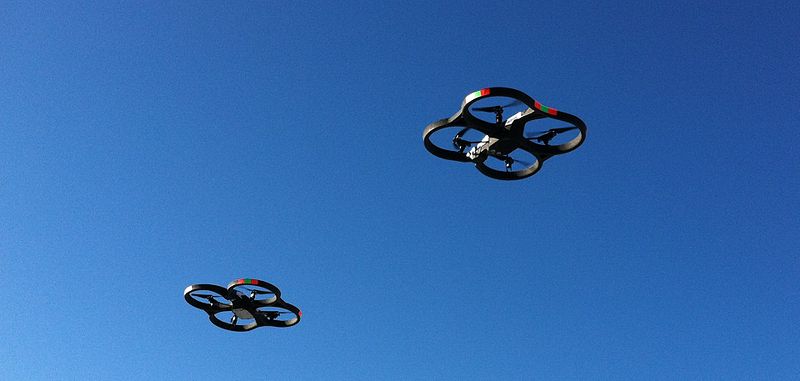As technology continues its relentless march forward, the world stands on the cusp of an exciting breakthrough in robotics: the ability to control swarms of drones seamlessly. A team of researchers at MIT has been working on a revolutionary control algorithm that not only promises to enhance the coordination of drones but also tackles the significant problem of avoiding collisions with both stationary and moving obstacles. This advancement represents a crucial step in the evolution of autonomous flight, paving the way for a myriad of potential applications.
Complexity Simplified: The Power of Decentralized Systems
The traditional method of controlling robotic swarms often relies on centralized algorithms. While these methods consolidate control and simplify decision-making, they also run the risk of becoming a single point of failure. Imagine a concerted effort to create a symphony of drones, only for one conductor to become overwhelmed and bring the whole performance to a screeching halt. This is where decentralized algorithms shine. By distributing the responsibility across multiple entities, each drone operates with its partial understanding of the environment, minimizing risks associated with interference and communication failures.
- Resilience: A decentralized approach allows drones to continue functioning smoothly even if communication links falter.
- Adaptability: Attacks or blockages to one drone won’t spell doom for the entire swarm, facilitating greater overall adaptability in dynamic environments.
How the MIT Algorithm Works
The brilliance of MIT’s algorithm lies in its ability to manage information to minimize bandwidth use while maintaining efficiency in communication. Instead of sending complete data about their environment to all other drones, each drone communicates only relevant information about neighboring drones, effectively consolidating the data flow.
In this approach, each drone shares a set of linear constraints detailing the safe areas around them, ensuring that each member of the swarm gradually builds a comprehensive, collective understanding of the flying space. This method significantly reduces the amount of data transmitted, enabling a more efficient operational framework.
Applications: From Surveillance to Collaborative Manufacturing
The potential applications for this technology are nothing short of groundbreaking. Imagine swarms of drones gracefully patrolling vast expanses for surveillance or supporting search-and-rescue missions in hazardous conditions. Additionally, the technology can have transformative implications for industrial settings—think of mobile robotic teams that can collaboratively move and manage heavy objects on a factory floor without fussing over collision risks.
As the researchers at MIT have noted, practical demonstrations of these systems remain in development. However, simulations have showcased promising results where virtual drones can maintain formation and adaptively respond to obstacles, demonstrating the adaptability and potential this technology can bring.
The Road Ahead: Challenges and Opportunities
Despite the promising results seen in simulations and physical tests, there remain considerable challenges in moving from research to practical, real-world applications. Robots must learn to navigate complex spatial dynamics amidst varying environments filled with unpredictable obstacles. Critical factors such as accurate communication in real-world conditions and effective environmental perception must be tackled to refine this technology further.
As MIT prepares to present their work at the International Conference on Robotics and Automation, the questions surrounding the algorithm’s real-world applicability linger. However, the enthusiasm and vision of researchers like Javier Alonso-Mora signal a future where drone swarms could operate autonomously and efficiently, transforming our interaction with technology.
Conclusion: A Future Within Reach
The development of a decentralized algorithm marks a significant stride in our quest to harness effective robotic teams in various fields. As further refinements are made, we can anticipate drone swarms that not only navigate our skies but do so with a sense of coordination and agility that was once relegated to science fiction. At fxis.ai, we believe that such advancements are crucial for the future of AI, as they enable more comprehensive and effective solutions. Our team is continually exploring new methodologies to push the envelope in artificial intelligence, ensuring that our clients benefit from the latest technological innovations. For more insights, updates, or to collaborate on AI development projects, stay connected with fxis.ai.

